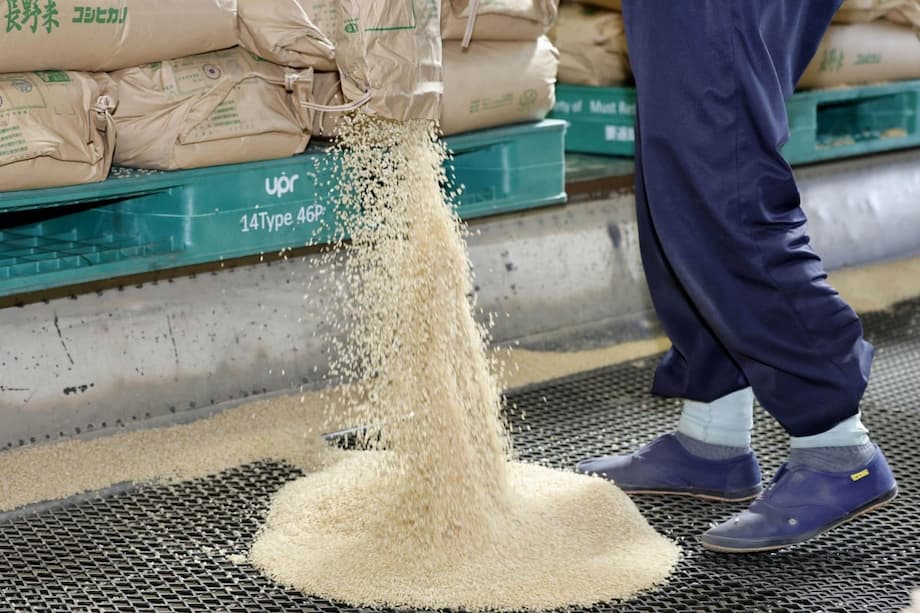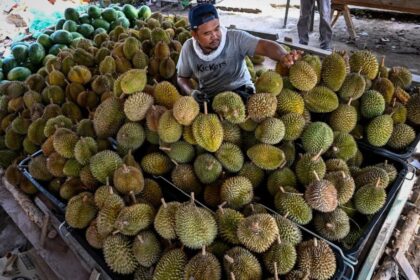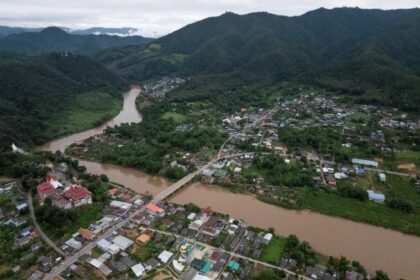Japan’s Food Insecurity Crisis: Why Most Low-Income Families Struggle to Feed Their Children
In recent years, Japan—a nation often associated with prosperity and culinary abundance—has faced a growing crisis that is largely hidden from view: food insecurity among its low-income families. A series of recent surveys and reports reveal that more than 90% of low-income households in Japan are struggling to afford enough food for their children, with many forced to reduce or eliminate staple items like rice from their diets. This crisis, driven by surging food prices, stagnant wages, and rigid agricultural policies, is reshaping the daily lives of millions and raising urgent questions about the country’s social safety nets and future food security.
- Japan’s Food Insecurity Crisis: Why Most Low-Income Families Struggle to Feed Their Children
- How Widespread Is Food Insecurity in Japan?
- Why Are Food Prices So High?
- Who Is Most at Risk?
- What Role Do Food Banks and Community Support Play?
- What Are the Health and Social Consequences?
- What’s Driving the Crisis? Inflation, Policy, and Climate Change
- What Solutions Are Being Proposed?
- In Summary
How Widespread Is Food Insecurity in Japan?
Food insecurity—defined as the lack of reliable access to sufficient, affordable, and nutritious food—has reached alarming levels in Japan. According to a June 2025 survey by Save the Children Japan, over 90% of low-income households reported difficulty affording food for their children. The survey, which covered nearly 8,000 households and about 14,000 children, found that around 60% had reduced or stopped buying staple foods such as rice due to high costs.
Another nationwide survey by the Institute of Science Tokyo found that nearly 44% of Japanese people had lost weight or gone an entire day without eating because they could not afford to buy food. The problem is especially acute among low-income families, single-parent households, and those living in rural areas or with lower educational attainment. In regions like Tohoku and Kyushu, more than half of respondents reported being in a “food security crisis group.”
“The issue is not a lack of food but financial barriers to purchasing it,” explained Takeo Fujiwara, director at the Institute of Innovate Research. He noted that social vulnerability, low priority on nutrition, and limited access to grocery stores also contribute to the crisis.
Impact on Children and Families
For children in low-income households, the consequences are immediate and severe. The Save the Children survey found that the percentage of families reporting insufficient meal portions for their children had risen across all meals. School lunches, which are nutritionally balanced and subsidized, have become a vital lifeline. When school is out—such as during vacations—more than half of low-income families said their children did not have enough to eat at lunchtime, compared to less than 8% when school lunches were available.
Breakfast and dinner are also affected. The proportion of families reporting sufficient or fairly sufficient meal quantities dropped by over 11 percentage points for both meals compared to the previous year. Protein intake, essential for children’s growth, has declined as well: only about a quarter of families said their children eat fish or meat almost every day, while nearly two-thirds reported less frequent consumption.
Why Are Food Prices So High?
Japan’s food price inflation has outpaced overall inflation in recent years. In July 2025, core consumer prices rose by 3.1% from a year earlier, but food prices (excluding fresh items) soared by 8.3%. The price of rice—a dietary staple—has doubled in the past year, driven by a combination of supply shortages, substandard crops due to extreme weather, and a surge in tourism that increased demand for rice-based dishes.
However, experts argue that these factors alone do not fully explain the crisis. Japan’s rigid agricultural policies, designed to protect domestic rice farmers, have played a significant role. The country maintains a nearly 100% rice self-sufficiency rate, but this is achieved through strict production controls, high import tariffs (up to 778%), and subsidies that discourage flexibility in response to market shocks. When the 2024 rice shortage hit, the government refrained from releasing emergency reserves or increasing imports, leaving consumers—especially low-income families—facing soaring prices and empty store shelves.
Japan’s food self-sufficiency rate on a caloric basis remains low, at just 38% in 2023, making the country heavily reliant on imports for wheat, soy, and other staples. Global disruptions, such as the war in Ukraine and climate-related crop failures, have further driven up prices for imported foods, compounding the pressure on household budgets.
Who Is Most at Risk?
Food insecurity in Japan disproportionately affects certain groups:
- Single-parent households: Often led by women, these families face lower incomes and higher rates of poverty. Many single mothers report skipping meals or relying on cheap, low-nutrition foods to stretch their budgets.
- Elderly people: Many seniors, especially those living alone or on basic pensions, struggle to afford a varied and healthy diet. Social isolation can worsen the problem, as eating alone is associated with lower food diversity and poorer health outcomes.
- Children: Kids in low-income families are particularly vulnerable to nutritional deficiencies, which can affect their physical and cognitive development.
- Students: University students from rural areas, who often work part-time to support themselves, have increasingly turned to food banks as job opportunities dwindle and living costs rise.
According to a Kidsdoor survey, 80% of lower-income families with children said their household finances were much worse than the previous year. Many cited the price of rice as a key factor, with some struggling to put enough food on the table.
The Hidden Dimensions of Food Poverty
Food insecurity is not just about quantity—it’s also about quality, variety, and the social experience of eating. Academic research highlights that low-income single mothers in Japan face multidimensional food poverty. Financial constraints are significant, but so are time pressures, health issues, children’s preferences, and societal expectations. Many mothers skip meals, especially breakfast and lunch, due to work schedules and ingrained habits. Meals are often basic, with a reliance on leftovers and ready-made foods, and the pleasure of eating is frequently sacrificed.
“The mothers often skip meals, especially breakfast and lunch, due to time constraints, work schedules, and ingrained habits,” one study noted. “Most meals are prepared at home out of necessity, and there is a strong sense of guilt when relying on ready-made or aid-provided meals, influenced by societal expectations of motherhood.”
For the elderly, food diversity is closely linked to social integration. Men receiving public assistance had significantly lower food diversity compared to non-recipients, but eating together with others was associated with higher food diversity and better well-being.
What Role Do Food Banks and Community Support Play?
As food insecurity has grown, so has the demand for food banks and community meal programs. Organizations like Food Bank Kanagawa and Kidsdoor have become lifelines for many families, students, and seniors. Food banks provide not only food but also social support, helping to check on the well-being of vulnerable people and reduce the stigma associated with seeking help.
However, food banks face their own challenges. Rising utility costs have made it difficult for some families to cook the food they receive, leading to a greater need for no-cook items. Many single-parent households lose government benefits when children turn 18, increasing financial strain. Students, often reluctant to seek help, have come to rely on food banks as part-time work opportunities dwindle.
Experts argue that government programs are inadequate and that food insecurity is closely tied to growing inequality. Suggestions include linking redistribution programs to child-rearing allowances, improving assistance eligibility, and expanding the role of food banks with greater government support and investment in staff training and facilities.
What Are the Health and Social Consequences?
Food insecurity has far-reaching health implications. Poor nutrition in childhood can lead to stunted growth, cognitive delays, and increased risk of chronic diseases later in life. Among adults, especially the elderly, limited food diversity is associated with poorer health and lower quality of life. Social isolation, common among seniors and single parents, exacerbates these risks.
Broader research across Asia links food insecurity and poverty to higher rates of type 2 diabetes and other non-communicable diseases. Rapid urbanization, environmental changes, and shifting diets have contributed to rising diabetes rates, with vulnerable populations at greatest risk. Addressing food insecurity, therefore, is not just a matter of hunger—it’s a public health imperative.
What’s Driving the Crisis? Inflation, Policy, and Climate Change
Japan’s food insecurity crisis is the result of multiple, overlapping factors:
- Inflation and Stagnant Wages: While overall inflation remains moderate by global standards, food prices have risen much faster than wages, eroding purchasing power for low-income families.
- Rigid Agricultural Policies: Protectionist policies, high tariffs, and production controls have kept rice prices high and limited the sector’s ability to respond to shocks.
- Climate Change: Extreme weather events—such as heat waves and floods—have reduced crop yields and quality, driving up prices and increasing the risk of future shortages.
- Global Supply Chain Disruptions: Japan’s reliance on food imports for wheat, soy, and other staples makes it vulnerable to global price spikes and supply interruptions.
Researchers warn that the crisis is likely to deepen as climate change accelerates. Disasters such as droughts, floods, and heat waves are putting pressure on agriculture and food supply chains, with vulnerable populations the first to feel the impact.
What Solutions Are Being Proposed?
Addressing Japan’s food insecurity crisis will require a multi-pronged approach:
- Economic Support: Many families want regular food provision, food banks, and community meal programs. Subsidies for school lunches and food distribution during vacations are also popular requests.
- Policy Reform: Experts call for more flexible agricultural policies that balance producer protection with consumer access. Reducing tariffs, reforming production controls, and investing in climate-resilient crops are key steps.
- Social Support: Programs that encourage communal eating and social integration can improve food diversity and well-being, especially among the elderly and single parents.
- Climate Action: Investing in climate-resilient agriculture, supporting community gardens, and reducing global pollution are essential for long-term food security.
- Youth and Grassroots Initiatives: Japanese youth are increasingly active in raising awareness and advocating for solutions. The newly established IFAD Youth Club Japan, for example, aims to tackle poverty and hunger through education, outreach, and collaboration with international organizations.
“The benefits of investing in young people are limitless, contributing to food security, poverty alleviation, job creation, and fostering peace and political stability,” said Federica Cerulli Irelli, Head of Donor Engagement and Partnerships at IFAD, at the launch of the IFAD Youth Club Japan.
In Summary
- Over 90% of low-income Japanese families are struggling to afford enough food for their children, with many reducing or eliminating staple foods like rice.
- Food insecurity is driven by surging prices, stagnant wages, rigid agricultural policies, and climate-related crop disruptions.
- Children, single-parent households, the elderly, and students are among the most affected groups.
- Food banks and community meal programs are vital but face increasing demand and resource constraints.
- Food insecurity has serious health and social consequences, including poor nutrition, chronic disease risk, and social isolation.
- Solutions require economic support, policy reform, social integration, climate action, and grassroots advocacy.












